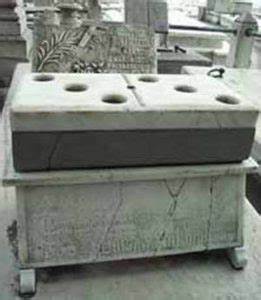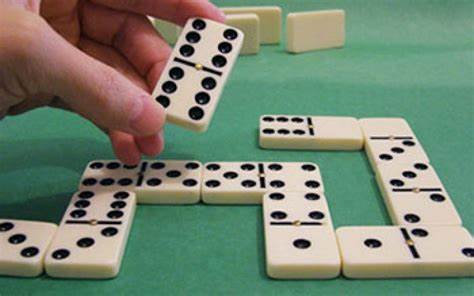THE POPULAR DOMINÓ GAME AND THE STORY OF DOÑA JUANA MARTÍN, THE DOMINÓ LADY. PHOTOS.
Dominoes is a board game in which rectangular tiles are used, generally white on the face and black on the underside, divided into two squares, each of which has one to six points marked on it, or none at all. The complete set of dominoes consists of 28 pieces, each of which represents a pair of possible values.
Dominoes emerged a thousand years ago in China from dice games. It does not seem that the current form of 28 double rectangular tiles was known in Europe until, in the middle of the 18th century, it was introduced and spread everywhere by the Italians. The name of the game is of French origin and was taken from a black hood on the outside and white on the inside, the same colors that dominoes present.
Its popularity in Latin American countries is immense, particularly in the Hispanic Caribbean (Venezuela, Colombia, Dominican Republic, Puerto Rico, Cuba, Panama, Mexico, etc.).
The game is usually played with four solo players. The chips are shuffled face down and 10 are dealt to each player, leaving 40 on the table (if 4 players participate). It is played clockwise. Each player tries to match the number on one of the ends of one of his tiles with the number on a free end of any tile that is face up on the table. If a player cannot do so, he loses his turn and the player to his right continues. Each player can play only one token per turn.
The first player to get rid of all the tiles announces “I won” and wins the game.
Very popular throughout Cuba, in the eastern region it is played in two modalities called: dominoes and capicua, it consists of 28 chips, from 0 to 6. 7 chips are distributed per player.
THE STORY OF DOÑA JUANA MARTIN, THE LADY OF DOMINO…
This story begins in Havana at the beginning of the last century and the respectable lady Doña Juana Martín de Martín, who belongs to a distinguished family, with wide social recognition and owner of the then famous Havana garden ‘El Fénix’.
She had a hobby, she liked the game, and she always found an excuse to start a game of dominoes. In other words, between flowers and dominoes, the entertaining life of Doña Juana passed.
Doña Juana’s problem was not the time she spent on the chips, but how upset she got when she lost data. On March 12, 1925, her luck was not on her side, as she was unable to recover from the adverse streak of the last few days. But luck seemed to be waiting for her just around the corner, or at least that’s what a fortune teller and others dedicated to the art of predicting the future assured her.
Confident, Doña Juana Martín de Martín started her game that March 12 at number 43 Galiano Street, where she lived. The game was developing favorably. She just needed to drop the only token she had left. Two of the players went over, her brother-in-law Pedro was left to play; victory was almost certain and, just before proclaiming himself the winner and confirming the fortune teller’s designs, Pedro extended his hand and dominated.
Juana couldn’t believe it, she had been left with double three in her hands, and her indignation was so great that she had three heart attacks one after another. Even with the card tightly pressed between her hands, Doña Juana Martín ceased to exist.
She was buried on March 13, 1925, in the Cristóbal Colón Necropolis, and above her pantheon is accompanied by the double three token sculpted in black and white marble; and engraved, on the tombstone, you can review the game that death won over Doña Juana.
EL POPULAR JUEGO DEL DOMINÓ Y LA HISTORIA DE DOÑA JUANA MARTÍN, LA DAMA DEL DOMINÓ. PHOTOS.
El Dominó es un juego de mesa en el que se emplean unas fichas rectangulares, generalmente blancas por la cara y negras por el envés, divididas en dos cuadrados, cada uno de los cuales lleva marcados de uno a seis puntos, o no lleva ninguno. El juego completo de fichas de dominó consta de 28 piezas, en cada una de las cuales se representa un par de valores posibles.
El dominó surgió hace mil años en china a partir de los juegos de dados. No parece que la forma actual de 28 fichas dobles y rectangulares fuese conocida en Europa hasta que, a mediados del siglo XVIII, la introdujeran y extendieran los italianos por todas partes. El nombre del juego es de origen francés y fue tomado de una capucha negra por fuera y blanca por dentro, los mismos colores que presenta el dominó.
Su popularidad en los países latinoamericanos es inmensa, particularmente en el Caribe Hispano (Venezuela, Colombia, República Dominicana, Puerto Rico, Cuba, Panamá, México, etc.).
El juego generalmente se práctica con cuatro jugadores en solitario. Se mezclan las fichas boca abajo y se reparten 10 a cada jugador, quedando en la mesa 40 (si participan 4 jugadores). Se juega en contra de las agujas del reloj. Cada jugador trata de unir el número de uno de los extremos de una de sus fichas con el número de un extremo libre de cualquier ficha que esté sobre la mesa boca arriba. Si un jugador no puede hacerlo, pierde el turno y continúa el jugador de su derecha. Cada jugador puede jugar solo una ficha por turno.
El primer jugador en deshacerse de todas las fichas anuncia: “Gané” y gana el juego.
Muy popularizado en toda Cuba, en la región oriental se juega en dos modalidades llamadas: dominó y capicúa, consta de 28 fichas, del 0 al 6. Se reparten 7 fichas por jugador.
LA HISTORIA DE DOÑA JUANA MARTIN, LA DAMA DEL DOMINÓ…
Esta historia comienza en la Habana a principios del pasado siglo y de la respetable dama Doña Juana Martín de Martín, perteneciente a una distinguida familia, con un amplio reconocimiento social y propietaria del entonces famoso jardín habanero ‘El Fénix’.
Tenía una afición, le gustaba el juego, y siempre encontraba una excusa para iniciar una partida de dominó. Es decir que entre flores y fichas de dominó, transcurría la entretenida vida de Doña Juana.
El problema de Doña Juana no era el tiempo que le dedicaba a las fichas, sino lo alterada que se ponía cuando perdía una data. El 12 marzo de 1925 la suerte no la acompañaba, pues no lograba recuperarse de la racha adversa de los últimos días. Pero la suerte parecía esperarla a la vuelta de la esquina, o por lo menos así se lo aseguró una cartomántica y otros dedicados al arte de pronosticar el futuro.
Confiada, Doña Juana Martín de Martín inició su juego aquel 12 de marzo en la calle Galiano número 43, donde vivía. La partida se desarrollaba favorablemente. Solo necesitaba soltar la única ficha que le quedaba. Dos de los jugadores se pasaron, quedaba su cuñado Pedro por jugar; la victoria era casi segura y, justo antes de proclamarse ganadora y confirmar los designios de la adivinadora, Pedro extendió su mano y dominó.
Juana no lo podía creer, se había quedado con el doble tres en las manos, y fue tanta su indignación que le sobrevinieron uno detrás de otro, tres infartos. Aún con la ficha fuertemente apretada entre sus manos dejó de existir Doña Juana Martín.
Fue inhumada el 13 de marzo de 1925 en la Necrópolis Cristóbal Colón y encima de su panteón la acompaña la ficha del doble tres esculpida en mármol blanco y negro; y gravada, en la lápida, se puede repasar la partida que la muerte le ganó a Doña Juana.
Agencies/ Wiki/ Rad.Encyclopedia/ Juan B. Rodríguez/ Extractos/ Excerpts/ Internet Photos/ Arnoldo Varona/ www.TheCubanHistory.com
THE CUBAN HISTORY, HOLLYWOOD.



 THE POPULAR DOMINÓ Game and the Story of Doña Juana Martín, the Dominó Lady. PHOTOS. * EL POPULAR JUEGO DEL DOMINÓ y la Historia de Doña Juana Martín, la Dama del Dominó. PHOTOS.
THE POPULAR DOMINÓ Game and the Story of Doña Juana Martín, the Dominó Lady. PHOTOS. * EL POPULAR JUEGO DEL DOMINÓ y la Historia de Doña Juana Martín, la Dama del Dominó. PHOTOS.






